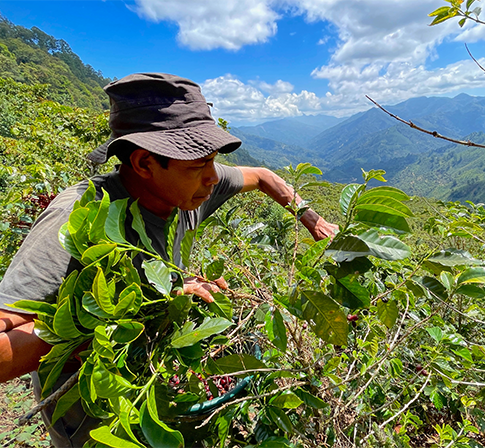La Providencia
Finca La Providencia is run by the Palacios family. It is 220 hectares large and spans an altitude of 1,350 to 1,950 meters above sea level. Coffee production begins at 1,550 meters above sea level and encompasses 180 hectares of the farm, with a focus on Bourbon and Caturra varieties. However, the plot of Maragogype trees have special significance to the Palacios family. These trees were originally planted by Max’s grandfather, Javier, and are between 30-40 years old. The Maragogype variety produced Javier’s favorite cup, and he would reserve 100 pounds every year for his own personal consumption.
The sentimental value of this plot is one of the reasons Max has decided to preserve these trees over the years, as opposed to replacing them with Bourbon or Caturra like the rest of the farm. This small plot only produces 8-15 bags per year, and is pruned every 4-6 years to keep it productive and healthy. This lot has been enjoyed by generations of Palacios, and needless to say, we’re humbled and honored Max shares it with us.
This high altitude results in a slow maturation period for the coffee cherries, allowing sugars to develop and increasing complexity in the final cup. The steep topography requires great attention to detail to avoid erosion and the depletion of nutrients from the clay loam soil. Native trees are intermingled with the coffee plants, providing shade for the coffee and preventing soil washing. These trees also act to preserve biodiversity and local ecology on the farm. Fertilization is practiced multiple times a year to retain nutrients in the soil.
At the base of the farm is La Providencia’s nursery. A single full time worker manages the propagation and care of coffee plants and shade trees. To keep the farm disease resistant and to normalize production, coffee plants are replaced on average every 8 years.
This requires the nursery to produce 60,000 new plants per year. Seeds are collected from trees already on the farm to ensure the cup profile remains consistent over the years. They’re sowed and grown in sand for 45 days before being transferred to soil in planter bags, where they remain for a year until being transplanted to various plots throughout the farm.






